#Greco-Roman period
Explore tagged Tumblr posts
Text

Archaeologists Unearth Mummies with Golden Tongues in Egypt
Archaeologists have unearthed several ancient tombs with dozens of mummies—including some with golden tongues.
Researchers made the findings during excavations at the ancient city of Oxyrhynchus, an extensive archaeological site located around 100 miles south-southwest of Cairo near the modern-day municipality of Al-Bahnasa in Minya Governorate.
Oxyrhynchus was "very important" during ancient Egypt's Greco-Roman period, which spanned hundreds of years from the late fourth century B.C. until the 7th century, Esther Pons Mellado and Maite Mascort, co-directors of a Spanish archaeological mission at the site.
"[It[ was the second city of Egypt after Alexandria. There was a great business and cultural relationship between these two cities," they said.
The Greco-Roman period began with Alexander the Great's conquest of Egypt—then controlled by the Persians—in 332 B.C. An ancient Greek state known as the Ptolemaic Kingdom was subsequently established in 305 B.C., which ruled Egypt until 30 B.C. when the region was conquered by the Romans.

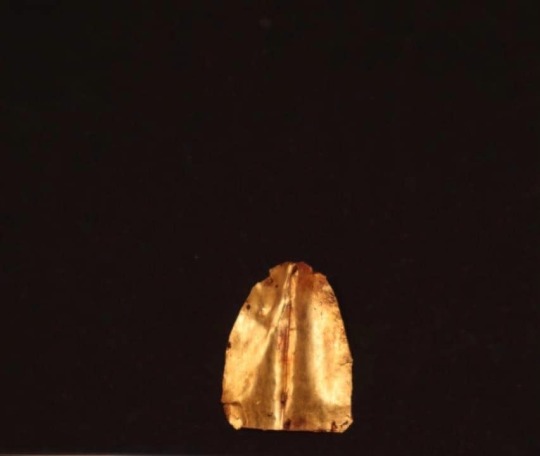
The territory became a province of the Roman Empire, which eventually divided into a western and eastern portion—with Egypt belonging to the latter. The Roman period ended around A.D. 641 when Arab forces conquered Egypt.
The latest excavations at Oxyrhynchus took place in November and December 2023. Over the course of these investigations, Pons Mellado, Mascort and colleagues discovered several tombs from the Greco-Roman era, as well as human remains and artifacts.
The finds include two tombs dating to the Roman period, built with limestone blocks. In these tombs, the archaeologists uncovered more than 20 mummified individuals covered in multi-colored wrappings, as well as papyri with Greek texts and mud seals with Egyptian iconography.
Two of these mummies were found to have pieces of gold shaped into the form of a human tongue placed where their real tongue was. Such golden tongues have previously been found at Oxyrhynchus and, indeed, other archaeological sites in Egypt.


"Until now we have found 16 golden tongues in Oxyrhynchus," Pons Mellado and Mascort said.
Experts think the ancient Egyptians may have placed gold tongues on some human remains to enable the spirits of the deceased to communicate with Osiris—the god of the underworld—and to help them cross into the afterlife.
"The Egyptian people deposited the golden tongues on the tongue to restore vital functions to the dead and also so that the body remained intact in the afterlife. For the Egyptians, gold was the flesh of the gods," Pons Mellado and Mascort said.
In addition to the Roman-era tombs, the archaeologists also discovered three "hypogea"—or underground tombs—dating to the Ptolemaic period that had been excavated beneath the natural rock.
In these hypogea, the researchers uncovered several more mummies covered in colorful wrapping, a number of anthropomorphic stone sarcophagi (some of which were closed) and various terracotta statues depicting the goddess Isis-Aphrodite, among other artifacts. This deity is a form of the Egyptian goddess Isis combined with the fertility aspects associated with the Greco-Roman goddess Aphrodite.


In one of the hypogea, the team also found many multi-colored limestone blocks with decorations, including depictions of humans, snakes, pigeons and plants.
All these findings are very important for the history of the funerary world in Oxyrhynchus," Pons Mellado and Mascort said.
"It is the first time that we have found an Oxyrhynchus terracotta with the image of Isis-Aphrodite, and the first time that this kind of piece has appeared in this area of Middle Egypt. The limestone blocks with decoration [are also very important]."
The limestone blocks—another new finding at Oxyrhynchus—appear to have come from some kind of construction, although the nature of the structure is unclear.
By Aristos Georgiou.
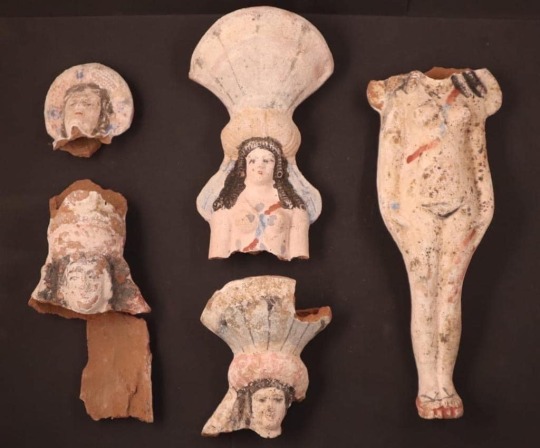

#Archaeologists Unearth Mummies with Golden Tongues in Egypt#ancient city of Oxyrhynchus#Greco-Roman period#ancient graves#ancient tombs#ancient artifacts#archeology#archeolgst#history#history news#ancient history#ancient culture#ancient civilizations#ancient egypt#egyptian history#roman history
83 notes
·
View notes
Text
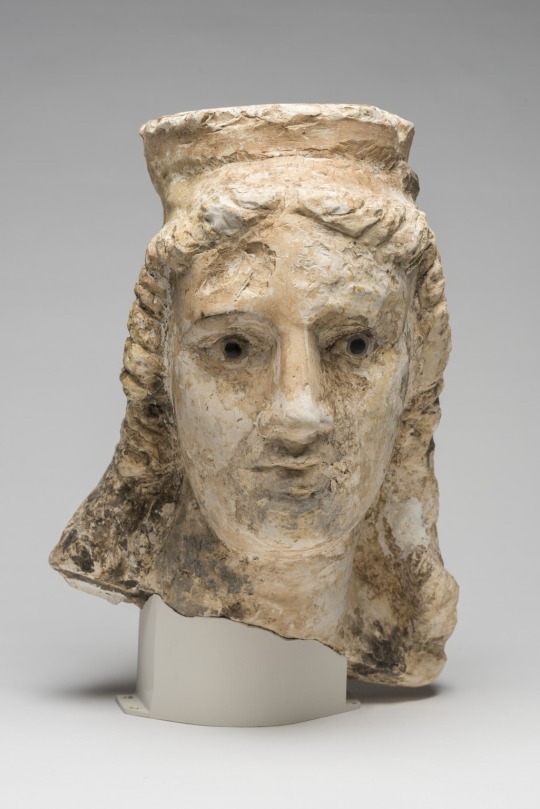


~ Female Head.
Culture: Graeco-Egyptian
Place of origin: Akhmim, Egypt
Date: 1st century B.C.-A.D. 1st century
Period: Ptolemaic Period-Roman Period
Medium: Limestone, stone, pigment
#ancient#ancient art#history#museum#archeology#ancient egypt#ancient sculpture#roman#ancient history#archaeology#Greco-Roman#female head#portrait#akhmim#Egyptian#egyptology#Egypt#ptolemaic#roman period#1st century B.C.#a.d. 1st century
283 notes
·
View notes
Note
If you could escape to any other time period or world for one hour at a time, where/when would you go, and why?
Such a hard question to answer because there are so many different time periods to choose from.
If I could escape to any other time period for an hour, I would choose the turn of the century around 30 AD. I would love to experience not just the life of Jesus but also the rich interactions of the Romans, Greeks, Jews, and other Middle Eastern cultures and customs. Being able to witness these civilizations in their prime, with their buildings and structures standing as they were originally intended, would be awe-inspiring. The chance to observe the political and social dynamics of the time, to walk through ancient cities like Jerusalem or Rome before they became ruins, and to see how everyday life unfolded in such a pivotal era in human history would be an unforgettable experience. So for an hour I'd like to see all the hustle and bustle from everyone and everything.
So for 30 AD, I would be in:
The Early Roman Empire under Emperor Tiberius.
The Second Temple Period for Jewish history.
The Greco-Roman period for cultural interactions.
In a single sentence... I would like to visit 30 AD, the start of the 1st century during the early Roman Empire, in the midst of the Second Temple Period, when Roman, Jewish, Greek, and Middle Eastern cultures were thriving and interacting in ways that shaped the world.
#ask me anything#question#answer#time period#escape#dark academia#light academia#classical#academia aesthetic#escapism#academia#books and libraries#classic literature#books#architecture#1st century#early roman empire#second temple period#greco roman#romans#greeks#jews#jesus#culture#history#historical#academic#aesthetic#tumblr#bearwistleflute
14 notes
·
View notes
Text

Dionysus made me do it. 🐆🌿🍇
#Grecian#greco roman#ancient rome#ancient greece#Hellenistic#Hellenistic Period Revival#Hellenic#Greek Pantheon
8 notes
·
View notes
Text
The above image depicts two Hyena cubs, humorously labeled as "German Shepherd pups." Dogs are common pets in the early twenty-first century. Hyenas are dangerous, undomesticated wild animals that are illegal to own in a large number of places on account of "exotic animal laws."
It is evident that the above is a joke, both because most people in the early 21st century would not mistake a hyena for a dog (the distinct ears, muzzle, and fur pattern make it explicit), and because the humorist made a reference to "laughter." Hyenas are known to make an unusual sound that resembles human laughter and have, since at least the third century, been associated with laughter. A group of Hyenas is called a "Cackle" for that reason.
An early twenty-first century viewer of the above image would recognize the hyenas, recognize the fact that they laugh BECAUSE they are hyenas, and would find humor in the idea that somebody could make such a silly mistake. They would understand that these hyenas are not actually for sale, and would understand that it is a fictional narrator making the mistake, not the image creator.

#period novel details#explaining the joke ruins the joke#not explaining the joke means people 300 years from now won't understand our culture#it's interesting how a lot of animal stereotypes EXPLICITLY go back to the greco-roman world#you can imagine Roman four year olds laughing like hyenas or roaring like lions when they play#I think that kind of long reaching cultural influence is fascinating
37K notes
·
View notes
Text
Karnak and Luxor Temple Complexes Egypt

View On WordPress
#18th Dynastic Theban Triad#Abu El-Haggag Mosque#Alexander the Great#Amenhotep III of the 18th Dynasty#Amun The Creator God#Amun-Ra Suen God#Ancient Egyptian Culture#Ancient Egyptians#Ancient Greeks#Arabic word Khurnaq#Avenue of the Sphinxes#Colonnada of Amenhotep Ill and Tutankhamun#East Bank Nile River#Egypt Greco-Roman Period#Egypt Middle Kingdom#Egypt New Kingdom#Egyptian Hieroglyphs#Egyptian Ipet-isut (The Most Selected of Places)#Egyptian New Kingdom#Egyptologist#Egyptologist Professor Gaston Maspero#Emperor Diocletian#Festival of Opet#Gebel el-Silsila Area South-Western Egypt#General Ptolemy#God Amun#God Hathor#Goddess Mut#Hatshepsut Obelisks#Horemheb
0 notes
Text


Examining the "Feminine"
mythology & meaning of venus, taurus, and libra ♀
by thesirenisles



Dark/Night Mode recommended. Do not steal, rewrite, or copy any of my original writing. Photos are from Pinterest or collaged by me. If it does not apply, let it fly. All rights reserved. © 2024 The Siren Isles
Your Majesty,
It is as if you manifested in this world to be adored and cherished. Blessed with royal charisma and a natural grace, your Venusian energy is often happily welcomed. Even with afflictions, there is just something(s) about you that others value.
A Venusian is blessed to enjoy the material aesthetics and splendors of this world. They understand high-quality, material value in items and prefer the nicer things. They have an inherent taste for what is aesthetically pleasing. The Venusian tends to collect all of these things... while being on the journey to understanding that they can't collect people.
At your core… you are here to create and increase the value, beauty, harmony, and love in the world around you.
It's all about life’s pleasures when you’re a child of Venus and they float diplomatically, steadily seeking pleasure of all forms, whether this be from material means, the five senses, or even the addictive taste of social relevance.
╰┈➤ Think: Serena VDW from Gossip Girl, waltzing around with her “Golden Retriever” energy lol. Beyoncé, (Venus 1H) no matter the rumors... honestly can she actually ever be canceled? Jasmine Tookes (model) has such a Venusian complex, Venus 1H)
With this energy dominant in the natal chart, you can become a natural feminine role model for the women in your life. Venus is a benefic and a lucky chart ruler energy. But, this does not come without its lessons usually involving worth, value, and balance.
-`♡´--`♡´--`♡´--`♡´--`♡´--`♡´--`♡´--`♡´--`♡´--`♡´--`♡´-
In astrology, the gifts of Venus manifest in:
⋆˚⋆˚ ❥ TAURUS (fixed Earth) 2nd House (Possessions, Values, Skills) understands tangible & personal worth but is seeking to understand the value of intangible beauty in life.
⋆˚⋆ ❥ LIBRA (cardinal Air) 7th House (Marriage and Partnership) understands how to create beautiful social and romantic relationships based on justice, but is seeking to understand the true value of self love & worth.
-`♡´--`♡´--`♡´--`♡´--`♡´--`♡´--`♡´--`♡´--`♡´--`♡´--`♡´-
If you control the feminine deity,
you control the feminine.



VENUS (Aphrodite to the Greeks, Hathor to Ancient Egyptians) is the Goddess of love, feminine energy, erotic desire, harmony, balance, and to some motherhood.
Greco- Roman Mythology:
When consuming any ancient mythological texts, one must consider the social and political attitudes or even agendas during that time period to add context. This female social status very clearly carries over into their mythology.
-`♡´--`♡´--`♡´--`♡´--`♡´--`♡´--`♡´--`♡´--`♡´--`♡´--`♡´-
🐚 In Ancient Greece: "Greek women had virtually no political rights of any kind and were controlled by men at nearly every stage of their lives." (source)
🐚 In Ancient Rome: "Unlike society in ancient Egypt, Rome did not regard women as equal to men before the law." (source)
Glamour is the enemy of truth.
Her sordid birth is GLAMOURIZED in an undeniably gorgeous painting: “Birth of Venus” by Sandro Botticelli; 1486 (see below).
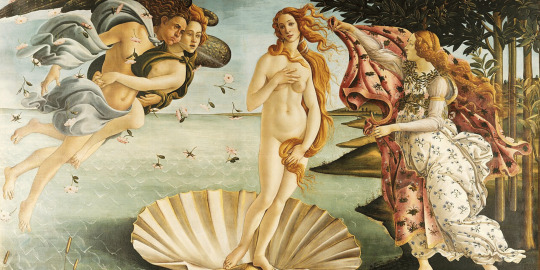
🐚 This beautiful portrayal led to Venus being OFTEN glamourized by women, especially here on Tumblr. We feel empowered by her, which is justified. But, her Greco-Roman mythology is anything but empowering. No shade, but it embodies the social limits and pain for women within the dominant European culture. 🐚 The Goddess is often presented on display, (as above) her womanhood made a spectacle! Her very "feminine" form is written to have manifested from the discarded sexual organs of a male God, (Uranus), Also then.. technically her father.
This is a DIVINE Goddess and YET ...
Her adoptive father, Jupiter (Zeus), literally sold her to her "husband", Hephaestus (Vulcan), like property.
She has petty grudges stemming from vanity, tormenting beautiful young maidens.
She engages in frequent, extramarital love trysts with a sibling, Ares (Mars)
... & we're supposed to romanticize this??? ✋🏾(It's giving Cersei Lannister).
-`♡´--`♡´--`♡´--`♡´--`♡´--`♡´--`♡´--`♡´--`♡´--`♡´--`♡´-
🐚 Negative divine feminine imagery creates a space to demonize the many beautiful traits associated with Venus! This became especially apparent after the bloody global shift into Christian and Catholic dominance.
-`♡´--`♡´--`♡´--`♡´--`♡´--`♡´--`♡´--`♡´--`♡´--`♡´--`♡´-
and alas life imitates art:
"HOTTENTOT" VENUS
🐚 The Greco-Roman/ European depiction of Venus being on full display makes a disgusting reappearance in their humiliation, brutalization, and rape of naturally curvy and voluptuous African women. 🐚 Most notably, a South African Khoikhoi (or Khoisan) woman named Saartjie (or Sara) Baartman, who was fiendishly deemed the: "Hottentot Venus." (a racial slur; see image below) Her divinely feminine body was, like Venus , put on live display and defiled for ANY paying Europeans. Most all had never witnessed such divine beauty, 1810. (source) 🐚 They were socially conditioned to gawk, hyper-sexualize, and inflict pain upon the female form. Even after death, she was taken in 1816 and displayed in a French museum until as late as 1985."

Venus Figurine:
🐚 This grotesque misuse of Venus in the news article title takes its inspiration from: The Upper Paleolithic “Venusian figurine”, an example the “Venus of Willendorf” (28-25,000 BCE; see below) which also shows pronounced hips and figure. Men were said to carry these in thought of women. However, the exposure is none short than Venus' own in the Botticelli painting.

🐚 While similar in their representation, the Greco Roman translation of this Goddess is far too crass and none of Venus' listed Greco-Roman origin stories have any symbolic feminine connection or adoration to the actual bull or scales! LOL. So, I went on my search to connect the lost ancient mythological mysteries that did not make it past the Euro-Colonialism eradication and re-naming. 🔎🕵️


"Mother of the Pharaohs"

taurus: the horned cow🐄
HATHOR is the (Ancient Egyptian Goddess of the Divine Feminine, Love, Fertility, and even expression of female sexual desire). The Goddess is a cow or a maiden with cow horns, typical symbol of Taurus.
How is Venus connected to Hathor?
🐄 Since the moment they step foot in the "ancient New York City" that was Ancient Egypt, their European neighbors were enamored of Ancient Egypt's Neter (Gods), especially the "Mother of the Pharoah's". The Greco-Roman nations would come to conquer Egypt. Under Alexander the "gr8" in 332 B.C., they renamed one of the seven major African cities that worshipped Hathor: "Aphroditopolis" or City of Venus and made it a CAPITAL of its district. 🐄 The Venus planet symbol ♀ is literally the African Ankh. This fascination and renaming is like the renaming of Thoth into Mercury, Hermes, or "Hermes Trismegistus". (some say they explain it with "reincarnation.") You, as the reader, decide which mythology matches the energy best for yourself.
Mythological Origins:
🐄 Hathor is said to be born from the eye of Ra, like Sekhmet. She was thought of as beauty, love, grace incarnate. Her presence is said to exude an aura of allure, femininity, and attraction. She embodies passionate expressions of desire, love, and the pursuit of exquisite living. 🐄 A maternal symbol, she is considered the mother or nourisher of all of the Pharaohs. The presence of the Goddess in a Pharaoh's royal court is essential to ensure the connection to the divine. 🐄 Music and dance are another keystone of Hathor's energy. The female body is created to release tension and trauma with the very movement of your hips! Connect with your inner Goddess! 🐄 Symbols for Hathor: Cows, Sun disk with Cow Horns, Lotus Flower, Sistrum, Protective Cobra, Mirrors, and Cosmetic jars.
Why the cow? 🐄
🐄 Ancient Kemet (Egypt) connected their Gods to the natural skills, gifts, and talents of the animals within their ecosystem. This is the reason their Gods’ are called Neter, like “Nature". (For example: Lions of Leo are native to Africa) 🐄 The African cattle breed: “Ankole-Watusi" has female cows with very large horns… similar to the male bull. These horns are depicted holding the sun disk upon the head of Hathor, (as seen above & below in the Egyptian bas reliefs).

🌷Cows are the mothers!🌷
┈➤ Bulls are the male cow. Heifers are the females without offspring.
🐄 The natural feminine physical traits associated with the cow are: plush eyelashes, a pretty symmetrical face, pronounced nipples that produce milk, and wide hips. 🐄 However, the cow also provides fertilizer, which brought forth the agriculture of the African Nile Valley. The cow , not bull...is a perfect fertility symbol.
Hathor provides the Pharaoh the ANKH or “Venus planet symbol.” ♀ (see below)

Bas Relief of the goddess Hathor, Temple of Horus, Edfu, Egypt, Ptolemaic Period, c251 BC-c246 BC
"soft life"🐄
🐄 I imagine a Taurus (or 2nd houser) thriving in the energy of the cow, frolicking the lush green lands, eating their fill, and providing nourishment. If the 5 senses of a Taurus are satisfied, they are content. 🐄 They will create this value around them, often ensuring that their spaces smell good, the food is prepared excellently, and only the best to drink it down. Access to a Taurus is access to their natural value. 🐄 They will bless you with gifts that you need because they care enough to pay attention and want to increase your value too.. all while being loyal! I love Taurus energy, so similar to cancer... but less mood swings.


(noun). a person, especially a woman, who pursues a lifestyle of buying luxury items or of seeking them as gifts from lovers and admirers.
🐄 Taurus most often manifests Venusian gifts in the physical and sensual. This can be "classically" feminine physical traits, such as wider hips or ample bosoms, etc. On a negative, these traits can be hyper-sexualized or demonized while they are young, like their sister sign, Scorpio. But, it can also be literal material gifts and blessings.
🐄 On a positive, Venus will bless them with options! Many suitors will present these Earthly gifts, writing love poems to woo the feminine cow. Taurus may find pride in the flattery that comes with this treatment and beauty privilege. They are used to being adored (unless badly aspected).
Beware the love Bomb.
🐄 In love, these cows are especially vulnerable to being victims of love bombing. (When a potential suitor bombards one too quickly with serious promises, excessive flattery, and material gifts. This can be friends as well.🧿) The key here is to not allow flattery to falsely parade as love.
🐄 Taurus (2nd house) carries a natural royal energy and an air of grace. It’s your silent, but solid confidence of being a fixed sign. They are extremely loyal when they consider you kin. However, this dogmatic belief system can result in you charging your horns into sketchy territory. This reminds me of John Snow and his “honor” energy (from Game of Thrones).
it’s nearly impossible to change your mind.🌸
🐄 In love, this can be ignoring all of your friends over a partner who is not good for you. You find yourself giving all of your love, loyalty, and even money (most have a language of gift giving and receiving) to an undeserving soul. On the bright side, these tragedies will result in a tower moment marked with major transformation (also like sister sign Scorpio).🌷 🐄 Ultimately, I feel and often see that the Taurus (2nd house) native will be challenged to vacate the creature comforts in which they enjoy in order to transform like their sister sign, Scorpio. When in doubt, do NOT choose the Hephaestus (safe choice).


"Queen of the Earth"

libra: moral scales ⚖️
MA'AT (Ancient Egyptian Goddess rules balance, justice, harmony, law, order, and morality.) She is depicted as a maiden adorned with beautiful wings, very similar to Isis.
⚖️ I often find my beautiful Libran queens confused about the meaning of the scales and how it connects to femininity. I hope to be a light bearer. ⚖️ Ma'at represents the typical light feminine attributes in my opinion (elegance, forgiveness (justice), and nurturing energy (Venus). Similar to Librans, who inherently know how to enact these gifts create harmony in their social spaces and float amongst varying personalities. (Think: Lady Liberty or Lady Justice). However, the sign is the masculine side of Venus.
Mythological Origins:
⚖️ Ma'at is also a daughter of Ra, sometimes written as his wife. She manifested with Ra from the waters of Nun (Chaos). Her existence brought order to the realms . She is often depicted holding an ANKH and a scepter to symbolize power and eternal life. (See Below) Some sources say that she was married to Thoth (Mercury) and birthed 8 children, known as "The eight gods of Hermopolis." (Just like Aphroditopolis)
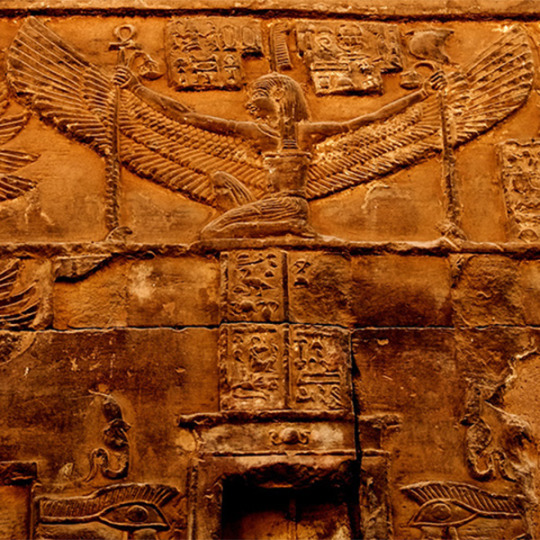
Why the Queen of the Earth?
⚖️ As mentioned, Ma'at was said to be present at the beginning. She was present when Ra stood upon her "mound" (seen above) for balance as he created the realm of Earth... ending chaos. This placed the Goddess in charge of the cycle of seasons, the movements of the sun, moon and stars, all parts of religion, relationships, and the moral actions of both mortal and God-alike. This is very powerful!
⚖️ The Libra native can carry very similar themes. In life, they may feel the need to regulate amongst their social circles and be the organized hostess. Cardinal energy blesses them with the drive to girl boss through anything!
⚖️ The ethical and spiritual foundation of Ancient Kemet was presented by a woman. The head of religious worship and justice was called "Priest of Ma'at". From this, you gather that Ancient Kemet was nothing as Egypt is today in terms of equality for women. Women were free to own their own properties, businesses, marry one-another, divorce their husbands, and even rose to be Pharaoh like in the case of Pharaoh Hatshepsut. (personal fave)
Why the scales? ⚖️

The Libran scales literally determined if a soul had lived their life with balance and morality! (7th House).
⚖️ The actions and morality of the Ancient Egyptian people were guided by a set list of commandments, known as the "42 Laws of Ma'at". These ancient texts predate the Bible, but have uncanny similarity in diction to the 10 Commandments. ⚖️ It was believed that Upon death, before one could enter the Duat (Underworld), the heart was weighed on the scales of Osiris (God of the Underworld) in comparison to a single feather of Ma'at. Osiris is linked to Saturn which is exalted in Libra. The weighing was done by Anubis (God of funerary practices and care of the dead).
“light as a feather”🪶
⚖️ If the heart weighed less or the same, the spirit was granted access to Aaru (a sort of heaven). This explains the scales of LIbra. If it did not, the heart was eaten and the native faded into nothingness.


(noun) a woman who acts as master of ceremonies, moderator, or who receives and entertains guests in her own home or elsewhere.
⚖️ The mythology of Ma'at is excellent... a little too excellent. She is like the oldest and favorite daughter who must be 100% perfect. Many Libra's may have father or projection issues in this way. The expectation of excellence begets pressure! ⚖️ This carries over into the relationships of course. This balancing act is where things get tricky for the Libra. This can manifest as people pleasing to keep the peace with friends, family, romantic partners, or co-workers. There can be a distaste for controversy or not wanting to damage the public image. It gives "Dollhouse" by Melanie Martinez vibes at its worse. Rich Auntie vibes at it's best!
Their scales will be tipped. ⚖️
⚖️ The Libras/7th housers will find themselves in situations where they have to STAND on their boundaries. It's like a self-actualization that has to happen. Venus is teaching them to respect and protect their Venusian gifts. Similar to Taurus. Venusian energy will bless you with generous suitors. BEWARE THE LOVEBOMBERS. ⚖️ They bear the reputation of almost needing to be in a relationship. This is obviously due to the 7th house ruling, but also stems from it's less favorable position with the sun.(Father). It is also kind of true, because it is apart of your life path. ⚖️ While it can be painful to have to experience relationship after relationship, these are apart of your life path and contribute to your glow up! To love and be loved is truly a blessing. You guys are blessed with so many loving friendships and romantic experiences!
Regina George?
⚖️ There can be some performative behavior and some judgment! After all, this is scales. Blessed with beauty, style, and grace... they can end up judging those who aren't. Mean Girl vibes. But, I believe this comes from the Libran urge to judge and lead the masses LOL. Ma'at energy. ⚖️ Despite any of this, Libra is the least slandered amongst the air signs (unless it’s Libra moon… I see quite a bit of slander? LOL.) Ma'at seems to bless the Libran with this air of favor. It's like they can really do no wrong, even sometimes after doing so. People are going to think the better of them 9/10 because the Libra has already established their character and value amongst social groups. The air just adds a bit more flow, allowing more harmonious energy in their relations.

Conclusion
♀ The intention of this post is to shed some light on lesser known mythology and symbolism of the planet Venus. I also believe that it is worth noting a very beautiful pattern among Venus and her signs.
♀ The Libran scales and Taurus Cow horns both resemble the female reproductive system. They also resemble the African Ankh symbol (of fertility and eternal life). Nature makes no mistakes and everything has duality, just as the Ancient Egyptians understood so well. It’s beautiful. (See below).

Thank you for reading!! Wishing you blessings!
@thesirenisles | masterlist | Enjoyed? Support!🧜🏾♀️
All rights reserved. © 2024 The Siren Isles

#thesirenisles#hathor#maat#ma’at#astrology observations#astro notes#astro community#natal chart#astro observations#libra#taurus#venus#astro placements#astrology memes#astro blog#astrology blog#astro#divine feminine#ancient kemet#ancient egypt#egyptian mythology#kemetic#kemet#ancient history#greek mythology#astrology#aphrodite#oshun#goddess#venusian
445 notes
·
View notes
Text
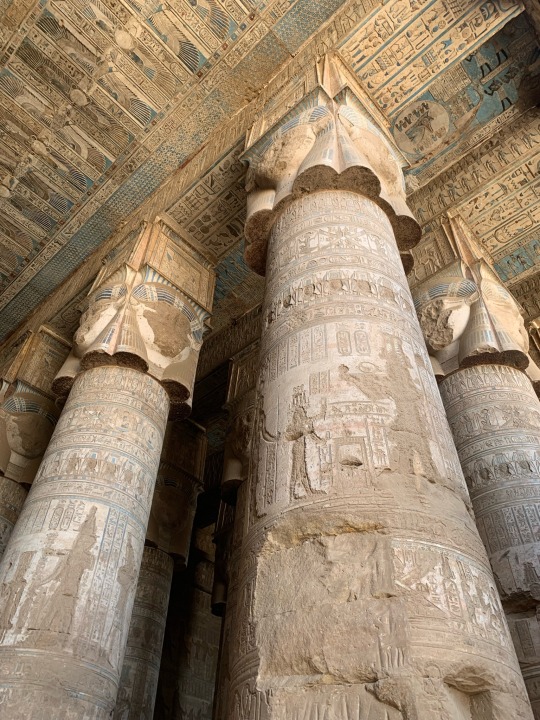
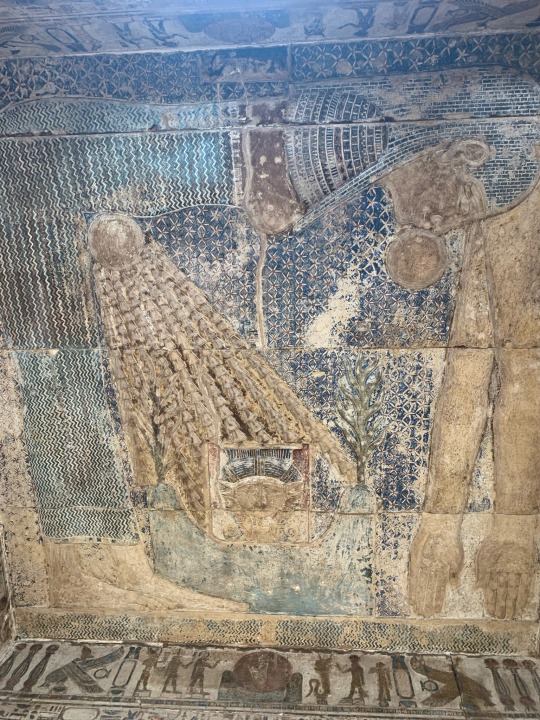
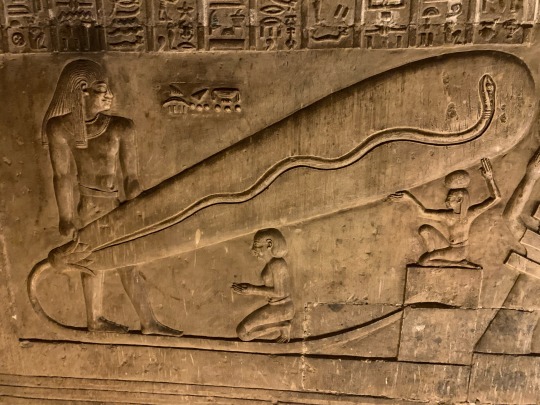

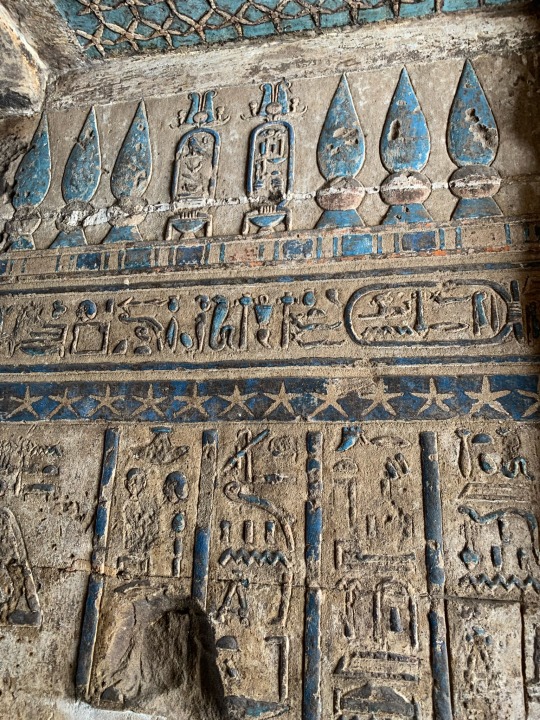



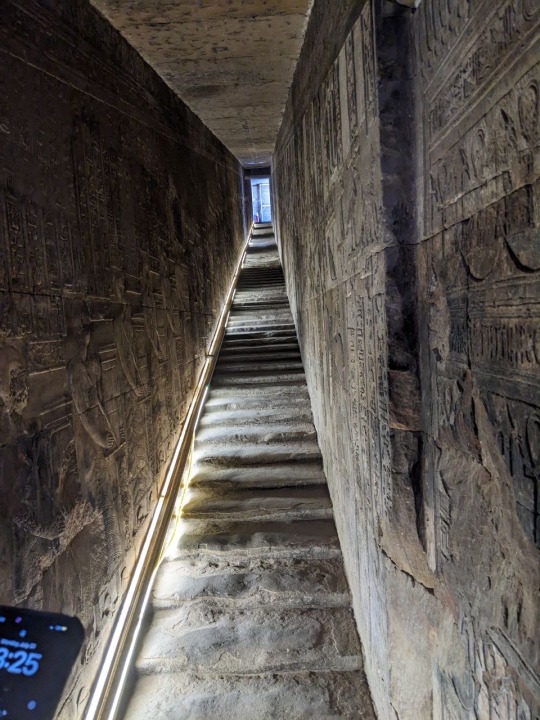

Scenery and imagery from the Hathor temple at Dendera, built in the Greco-Roman period
photos taken by me in August, 2023
Some parts of this temple, when I visited, were off limits. However it was very hard to distinguish what was and wasn’t off limits, so my companion and I wandered everywhere. We also bought passes to the different hidden chambers of the temple; well worth the price in my opinion. You descend or ascend cramped, steep stairs to get to seemingly secret and certainly hidden tunnels filled with vivid imagery of the Gods and worship. Unfortunately, the Dendera calendar filled with zodiacs, has been stolen and replaced with a black cast of what it once was. The original now rests in a museum in Europe.
#ancient egypt#dendera#Hathor#egyptian mythology#egyptian hieroglyphs#ancient history#egyptian gods#egyptian art#egyptology#ancient art#hieroglyphs#egypt
1K notes
·
View notes
Text
Not quite.
There is one other lil dude who gets the full frontal:
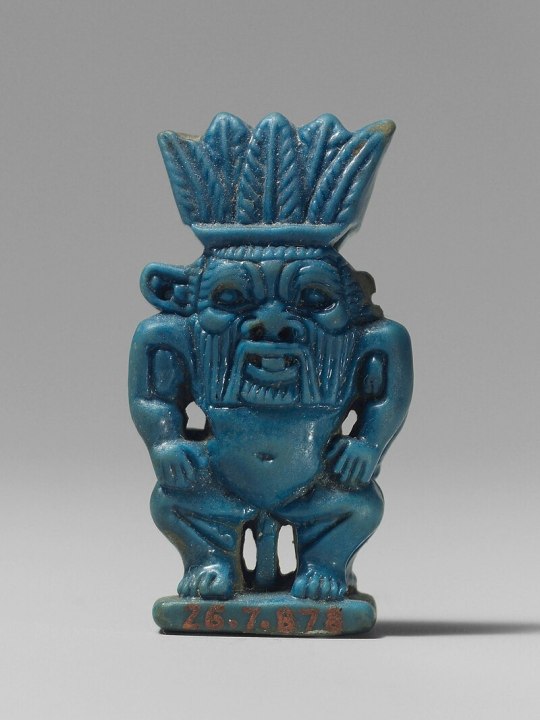
Say hello to Bes. He's a very old deity and one of the most enduring ones - possibly because he was the protector of pregnant women and children; driving away both snakes and evil spirits.
And I think this is why both Bes and Medjet are depicted like this; their power lies in their gaze!
tis the season to remember Medjed aka The Smiter, an invisible egyptian deity with laser eyes and nonbinary swagger:
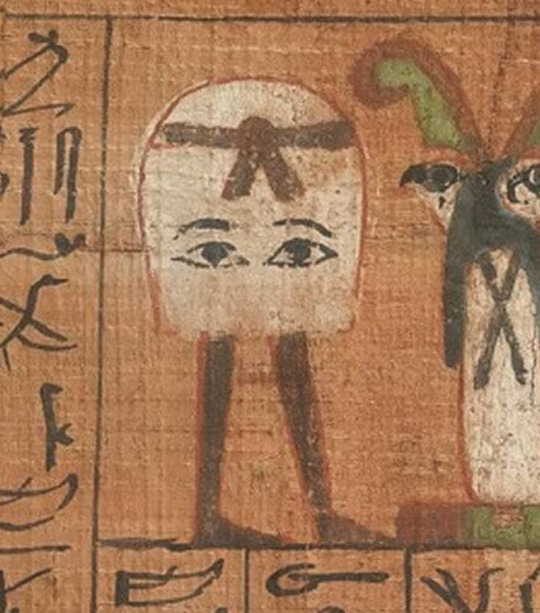
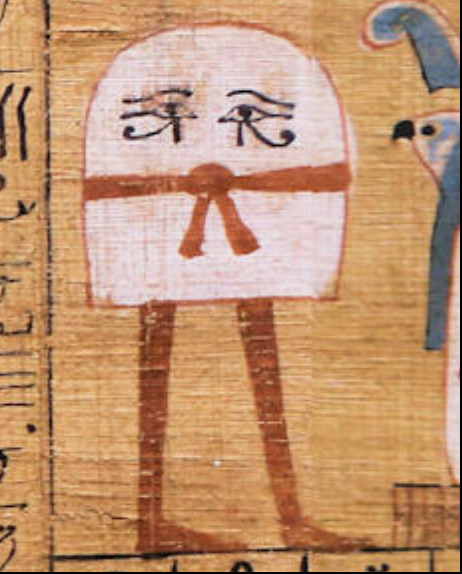
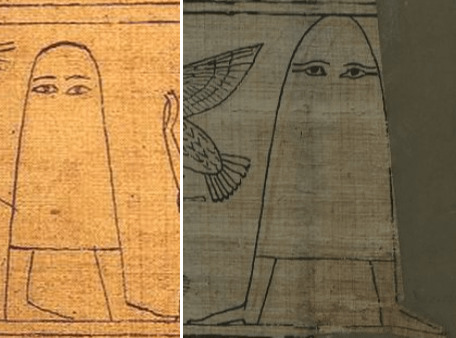
rotating them gently in my mind as they do a spiffy little dance number
#and yes#I know this is an amulet#but wall paintings of him look exactly like this as well#he's never in profile#it's just that most images of him are from the Greco Roman period#where things get a bit mooshy stylistically#this was one of the few I could find that are older#but mentions of him go back to the Old Kingdom#and afaik we got depictions of him from the Middle Kingdom?#anyway#he was a really important folk deity for his entire run#and we've just got more normal people stuff from the Greco Roman period than the ones before
44K notes
·
View notes
Text

33 Greco-Roman Family Tombs Found in Aswan, Egypt
An Egyptian-Italian archaeological mission has uncovered 33 family tombs from the Greco-Roman period near the Aga Khan Mausoleum in Aswan, Egypt.
The joint mission, led by Dr. Mohamed Ismail Khaled, Secretary-General of the Supreme Council of Antiquities, and Professor Patrizia Piacentini from the University of Milan, made the announcement earlier this month. The tombs, discovered west of Aswan’s Nile, date back to the Late Period and the Greco-Roman era, spanning from the sixth century BCE to the third century CE.
The Aga Khan Mausoleum, the resting place of Aga Khan III, Sir Sultan Muhammed Shah, who passed away in 1957, now sits above a necropolis with over 400 tombs. Dr. Khaled noted that it adds a new historical dimension to the Aga Khan area. The tombs vary in architectural style, with some featuring arched entrances and open courtyards made from mudbrick, while others are directly carved into the mountain rock. This diversity reflects the social stratification of the period.
Among the notable finds are mummified remains and funerary objects, including clay figures, sacrificial tables, ceramics, and painted cartonnages. An intriguing discovery within a stone coffin revealed the mummified remains of an adult and a child, likely adhered together by embalming fluids. Further analysis is planned to understand their relationship.



Anthropological and radiological studies have provided insights into the health conditions of buried individuals. Dr. Patricia Piachenti from the University of Milan noted that 30% to 40% of the deceased were infants, children, or adolescents. This high mortality rate among the young offers clues about prevalent diseases during that period. The remains of several adult women showed signs of pelvic bone trauma, suggesting childbirth complications or other medical conditions. Other mummies exhibited evidence of anemia, malnutrition, chest diseases, tuberculosis, and osteoporosis.
“Initial studies reveal that many individuals suffered from infectious diseases and bone disorders,” said Dr. Piacentini. “Some adult females showed signs of medical interventions such as amputations and bone trauma, indicating that ancient Aswan had developed some medical practices.”
Dr. Ayman Ashmawy, Head of the Egyptian Antiquities Sector, said that the lower parts of the necropolis were likely reserved for the middle-class residents of Aswan Island, including physicians, artisans, merchants, and storekeepers. The upper parts of the necropolis, however, appear to have been reserved for the wealthier upper class. This social stratification is reflected in the differing architectural styles and the types of artifacts found within the tombs.



The discoveries also include remains of colored cartonnage, clay and stone figurines, wooden coffins, and offering tables. The tombs’ architectural complexity reflects the advanced skills of the ancient craftsmen who overcame the challenges of digging into rock and constructing low-ceilinged funerary rooms and galleries.
The mission has employed the latest technology, including X-ray and CT scans, to analyze the mummies and artifacts. These technologies have allowed researchers to create three-dimensional reconstructions of the mummies and identify items such as bracelets found on some individuals.
By Dario Radley.



#33 Greco-Roman Family Tombs Found in Aswan Egypt#Aga Khan Mausoleum#Late Period#Greco-Roman era#ancient grave#ancient tomb#ancient mausoleum#ancient artifacts#archeology#archeolgst#history#history news#ancient history#ancient culture#ancient civilizations
41 notes
·
View notes
Text
2,000-Year-Old Fayum Portraits from Roman Egypt: also known as "mummy portraits," these funerary paintings were often fastened to the coffins of the people they depicted

Above: Fayum portrait of a woman from Roman-occupied Egypt, c.100-110 CE
Fayum portraiture was a popular funerary practice among the upper-class families of Roman Egypt from about 50 CE to 250 CE. Given the high mortality rates for children during this period, many of these portraits depict children and youths, but adults were often featured, too.
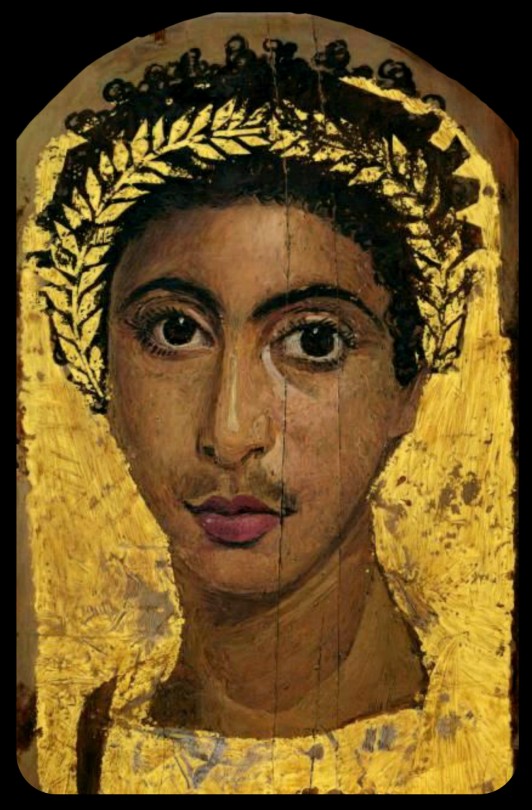
Above: portrait of a youth wearing a golden wreath, c.130-150 CE; the wreath and the background of the portrait are both gilded
The population of the Faiyum Delta, where most of these portraits were found, largely contained individuals with both native Egyptian/North African and Greek heritage. The Greek lineages can be traced back to the Ptolemaic period, when the Greeks gained control of Egypt and began to establish settlements throughout the region, gradually leading to a cultural diffusion between the Greek and Egyptian populations. The Romans eventually took control of Egypt in 31 CE, absorbing it into the Roman Empire and colonizing much of North Africa, but the demographics of the Faiyum Delta remained largely unchanged.

Above: portrait of a man with a mole on his nose, c.130-150 CE
Many of these Fayum portraits reflect the same blend of ethnic and cultural roots, depicting individuals with both Greek and native Egyptian heritage (a claim that is supported by both archaeological and genetic evidence). Some portraits may also depict native Egyptians who did not have any European ancestry, but had been integrated into Greco-Roman society.

Above: portrait of a bearded man, c.170-180 CE
These representations of native Egyptians provide us with unique insights into the actual demographics of Roman-occupied Egypt (and the ancient world at large). Non-European peoples are rarely included in depictions of the classical world; it's also interesting to see the blend of cultural elements that these portraits represent.
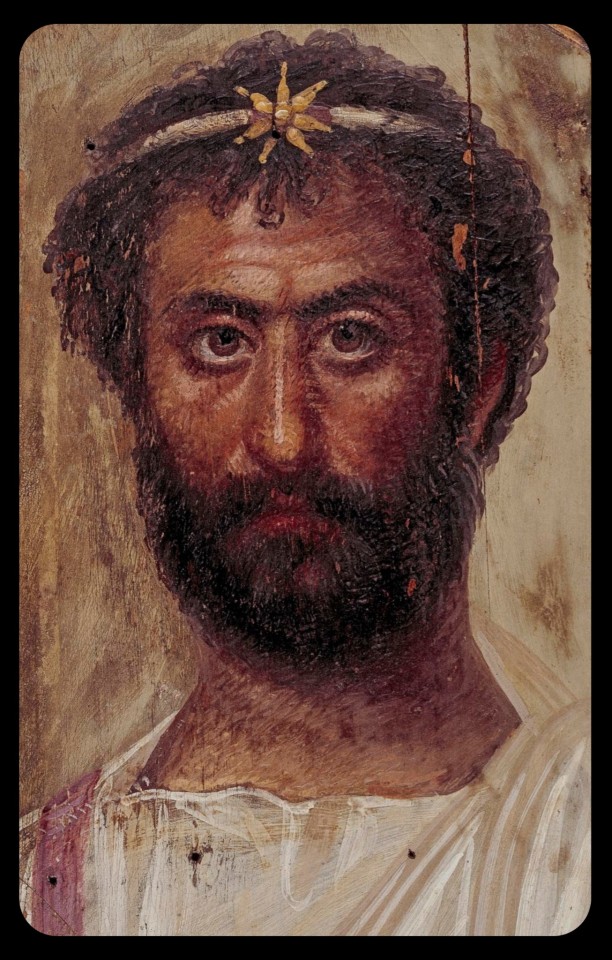
Above: portrait of a priest of Serapis, c.140-160 CE; the man in this portrait is shown wearing a fillet/crown that bears the seven-pointed star of the Greco-Egyptian god, Serapis
As this article explains:
In the 1800s and early 1900s, Western art historians didn’t know what to make of these portraits. Scholars of Roman history labeled them Egyptian. Scholars of Egyptian history labeled them Greco-Roman. These binary academic classifications failed to capture the true complexity of the ancient (or, indeed, modern) Mediterranean. In reality, Fayum portraits are a syncretic form, merging Egyptian and Greco-Roman art and funerary practices. They reflect the cosmopolitanism of both Roman and Egyptian history.

Above: portrait of a man, c.80-100 CE (left); portrait of a bearded officer, sometimes referred to as "Perseus," c.130-175 CE (right)
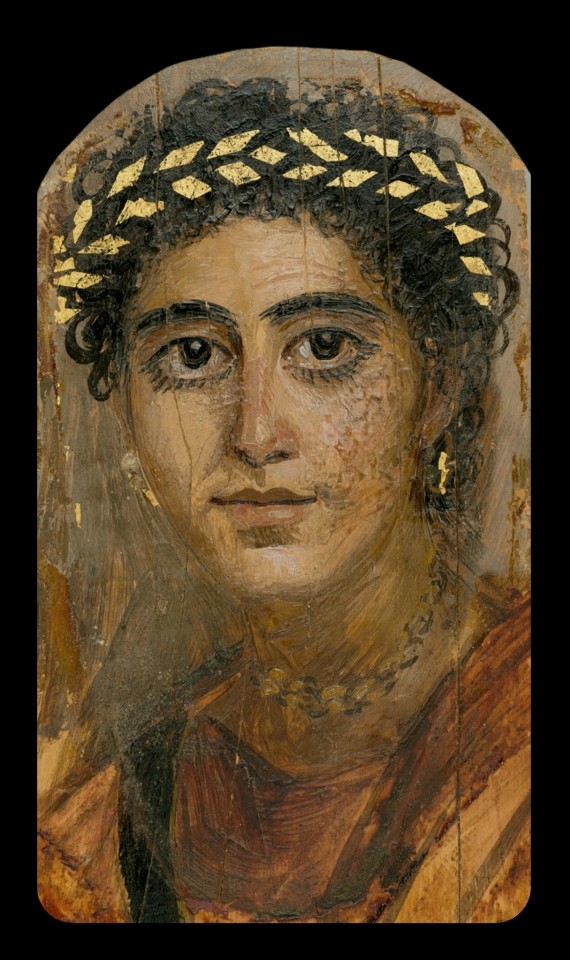
Above: portrait of a young woman in red, c.90-120 CE
Nearly 1,000 of these portraits are currently known to exist.
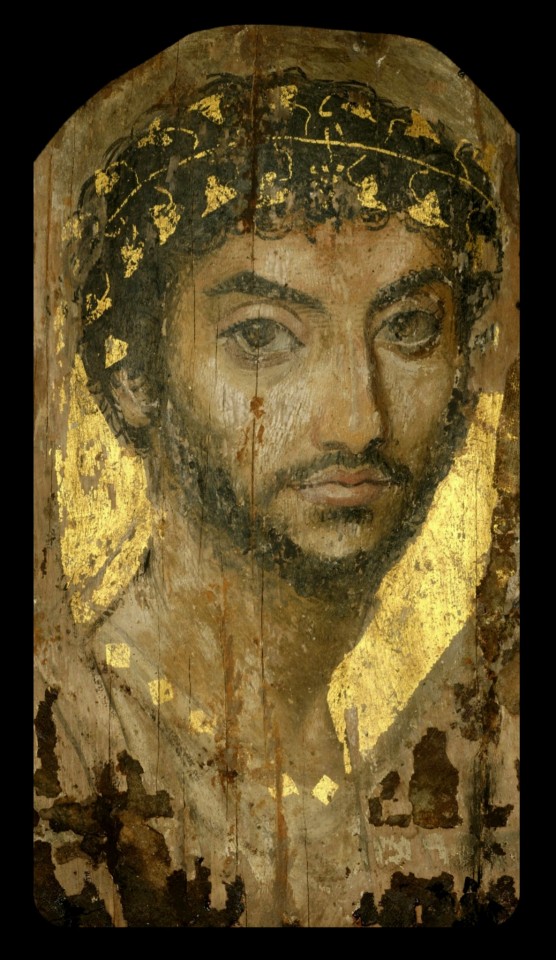
Above: portrait of a man wearing a gilded ivy wreath, c.100-150 CE
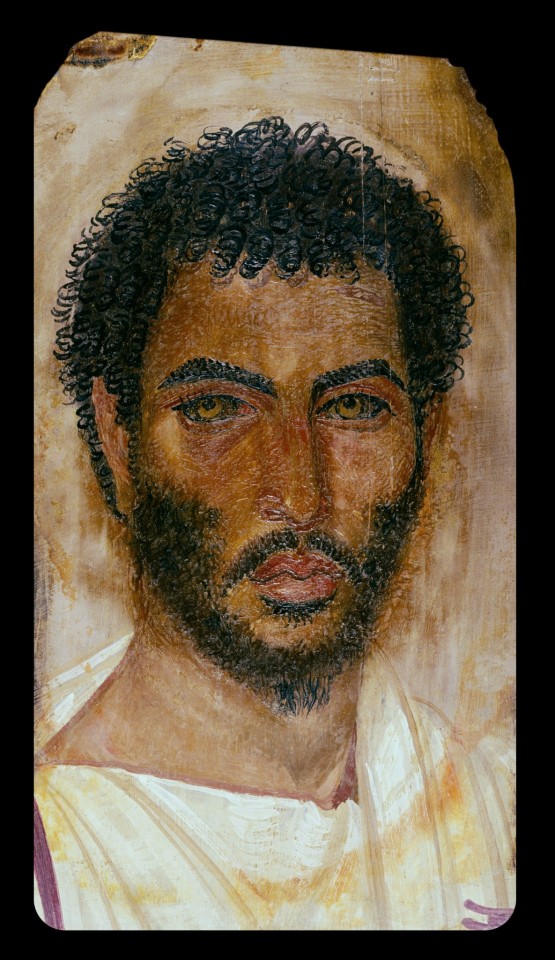
Above: portrait of a bearded man, c.150-170 CE
Sources & More Info:
Curationist: Fayum Portraits
Harvard Art Museums: Giving the Dead their Due: an Exhibition Re-Examines Funerary Portraits from Roman Egypt
Getty Museum: APPEAR Project
Getty Museum: Faces of Roman Egypt
National Geographic: Ancient Egypt's Stunning, Lifelike Mummy Portraits
The Athens Centre: The Myth of Whiteness in Classical Sculpture
Forbes: Whitewashing Ancient Statues: Whiteness, Racism and Color in the Ancient World
#archaeology#artifact#anthropology#history#ancient history#art#fayum portraits#roman egypt#ancient rome#ethnography#painting#portrait#north africa#people of color#egypt#religion#greco roman#greek#classical antiquity#fayum#mummy portraits#romano egyptian#representation
395 notes
·
View notes
Text

Dress
1800-1805
The Metropolitan Museum of Art
"The Empire silhouette is readily identified with its origins in the chiton of ancient Greco-Romans, which was a tubular garment draped from the shoulders and sometimes belted beneath the bust. Several re-interpretations have occurred throughout costume history but none have been as notable as the period bridging the rectangular panierred skirts of the 18th century and the conical hoop skirts of the 19th century. The neoclassic style was adopted in all forms of decoration after the French Revolution and was upheld during the Napoleonic Wars partly due to Napoleon Bonaparte's (1769-1821) alliance with Greco-Roman principles. In fashion, the style began as children's wear made from fine white cotton, but was adopted by women in the form of a tubular dress with skirts that were gathered under the bust with some fullness over a pad at the back. As the style progressed the skirts began to flatten at the front and solely gather from the bodice at the center back. The style persisted until the 1820s when the waist slowly lowered and the skirts became more bell shaped."
188 notes
·
View notes
Text
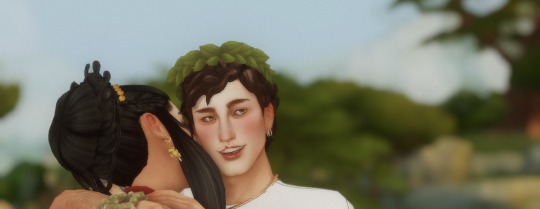






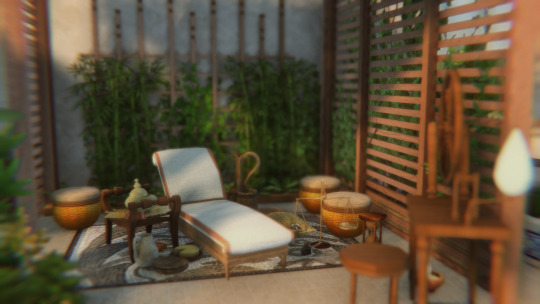


previous ➸ next | beginning
Oh dear, young, idiotic King Nikomachos II, son of Demosthenes of Mycenae. Or, rather some smaller provincial kingdom of north-western Lakonia, to rather generalise, from which his great Eurypontid house needed to expel him; with a reign that proves as just as trivial and hedonistic as he. Powdered in rouge as an effeminate leukochrōs, Nikomachos, deformed and ill-bred, possibly a bastard of helot whisper and beheld among five elder sisters, the boy’s kingship was a jest among all the Peloponnese behind closed doors. Yet, in his Kastro Koiláda Chalkou, the scrutiny of the Ekkelisa could not reach him and his whore-bride to be, Eurynome, for the luxury and the splendour of Dionysos and Demeter’s sweet ecstasy were irresistibly intoxicating. For who has time for leading trade routes and waring territory when the pig has only just been carved?
so, what is this? i actually am not sure yet, will it be gameplay, will it be story? we will find out at some point, but i just desperately wanted to play with the late bronze age because as an ancient history and linguistics major, it is my duty. i have always been deeply in love with my hellenistic greco-roman history and thought it would be quite fun to delve into a period i am not as familiar with with the Mycenaeans, to see what i can learn. also considering the beautifully accurate amount of cc clothing for this era, particularly by @clepysdra which i feel the classical age is lacking in among historical cc compared to the bronze age. BUT in speaking of accuracy, those that noticed i referenced the Eurypontid house of the diarchic Spartans, the Ekkelisa and the names of my sims themselves, for the sake of my own enjoyment, i WILL be snatching names for funsies with no relation to their historical origin, but i do want to try my best to make this accurate to Mycenaean culture/dress/relgion, etc. but i am still learning about this fascinating time. i also want to give the BIGGEST praise and thank you to @kyriat-sims for her absolutely beautiful early civilisation save that she’s created, as well as the build featured in this post (which you can find HERE and HERE) as although i tweaked the interior to my manic over-cluttered taste, the castle shell itself is done by her and it’s so brilliant <3
#cardamon#the delusions have got to me again#now you may have noticed my ultimate decades challenge has disappeared#and i don’t know what to tell ya#sometimes i just get struck with new inspiration and the adhd tells me to make it happen now#so now we’re here#hopefully i can make something out of it#:D#ts4#the sims 4#ts4 historical#ts4 legacy#ts4 early civilisation#ts4 greece#eurynome#nikomachos#ts4 ancient greek#leukochrōs#the ancient greek feminisation of the male face by painting it white
84 notes
·
View notes
Note
so I've been watching a lot of videos abt food that's uniquely Hong Kong and y'know with all the changes happening there I had a thought like hm is this preservation and documentation of cultural foods that are at risk of being lost?
and then I thought gosh this sounds familiar likkke everywhere we see violent colonization occur not only are lives and freedom lost but also language culture food
and then I wanted to ask you as a historian: has this always been the case? have people always had low key anxiety about culture "loss" or did they think of it a diff way? is this framing of colonization and cultural loss a recent one?
I'm realizing this is a big question and we are all le tired from les recent events, so pls view this as a no pressure ask, I just uh figured you're the only historian I have real access to haha
This is an important question that I don't currently have the mental wherewithal to answer in great depth, but I think it's important to speak to briefly. And I'll put it this way: yes, human beings have always felt that their culture, their way of life, their present existence, their friends and family, and the forces at work against them are tenuous, uncontrollable, and prone to sudden and violent destruction. I'd say it's one of the key themes of being human. I'll cite the famous example of the 8th-century Old English elegy The Ruin of the Empire, known usually as The Ruin:
This is what many of us would consider the dark and distant past, wherein an unknown person in Anglo-Saxon England is observing the ruins of the Roman Empire in Britain and reflecting on how fragile and frightening the present day feels, as if all the glory has faded into the past, as if things will not be "great" anymore, and the present is just moving inexorably toward darkness:
Bright were the castle buildings, many the bathing-halls, high the abundance of gables, great the noise of the multitude, many a meadhall full of festivity, until Fate the mighty changed that. Far and wide the slain perished, days of pestilence came, death took all the brave men away; their places of war became deserted places, the city decayed. The rebuilders perished, the armies to earth.
And yet... that was the 8th century. That was a very long time ago. A lot of history has happened since then, and despite everything, it's still here. People have always looked at the danger and fragility of their present situation and yearned for the perceived stability of the past. Indeed, the reason we have the myth of the "Dark Ages" is largely thanks to the 14th-century Italian humanist Petrarch, who looked at the (also objectively very, very crappy) 14th century, which is similar to now in a lot of ways, and built the shining myth of the Greco-Roman era as a bygone golden age that society needed to reinstate if it was going to save itself from self-inflicted destruction. This in turn gave rise to the Renaissance, which was intensely a cultural project to reclaim and re-instate a seemingly "better" past in the face of present-day chaos and uncertainty. This included a strict reifying of gender roles (etc. etc. Was There a Renaissance For Women?) and turn toward "purer" social ideals.
Anyway: these concepts have been shaped and articulated differently in various historical periods. But yes, the basic feeling that we are losing ourselves somehow, that the past was better and more stable, that the present challenges can be solved by insular reactionary politics, and so forth, is a very, very common human experience. For better or worse: both tangible and intangible artifacts have always been lost, destroyed, subject to violent sociopolitical conquest attempts, written out of history, and used for oppressive political and cultural processes. Part of the reason the right wing is doing so well worldwide right now is because they are tapping into a very, very old "put the strongman in charge and everything will go back to how [good] it used to be" mythology that is also as old as dirt and time, and which humans just keep doing when things feel existentially scary. This "weaponized nostalgia" is even more of an issue in the age of rampant disinformation, AI, and fake-news bubbles which can totally create what is accepted as reality, very often to the benefit of illiberal, right-wing, authoritarian forces. That is very hard to deal with and overcome, and I don't think we're anywhere near doing it.
That, therefore, is the bad news. The good (as it were) news is that at least these cultural processes and human instincts are not new, and indeed have continued for a long, long time. And even when these old things are destroyed, new ones emerge as well. So yeah.
108 notes
·
View notes
Note
I am getting vague Artemis & Apollo vibes from Shiningkit & Amberkit. I don't know why.
If they make it to be warriors, I dare you to name them Shiningmoon & Ambersun /j
~❦🥜
I got that vibe from them too! General Greco-Roman vibes from them coming from seafoam like Venus/Aphrodite did. Maybe I can add that influence even if it's a bit out of left field for the time period?
Anyways here's the twin's pixels!


#jcasks#juniperclan becomes overrun with orange cats#theres so many#they dont look too alike but in my mind ive always called them the twins so that is their name
273 notes
·
View notes
Text
The Mast
One of the most important elements of a ship are the masts, because this is where the sails are attached that serve to propel the ship.
History
The oldest evidence for the use of one solid masts comes from the Ubaid site H3 in Kuwait, which dates back to the second half of the sixth millennium BC. There, a clay disc was recovered from a sherd that appears to depict a reed boat with two masts.

A painted clay disc with a diameter of 6.5 cm from site H3 with a design reminiscent of a boat with two masts, second half of the sixth millennium BC
In the West, the concept of a vessel with more than one mast to increase speed under sail and improve sailing characteristics developed in the northern waters of the Mediterranean: the earliest foremast was identified on an Etruscan pyxis from Caere (Italy) from the middle of the 7th century BC: A warship with a furled mainsail attacks an enemy ship and sets a foresail. An Etruscan tomb painting from the period between 475 and 450 BC depicts a two-masted merchant ship with a large foresail on a slightly inclined foremast.

Tomb of the Ship, mid-5th century BC
An artemon (Greek for foresail), which is almost as large as the main sail of the galley, is found on a Corinthian krater as early as the late 6th century BC; otherwise, Greek longships are uniformly depicted without this sail until the 4th century BC. In the East, ancient Indian kingdoms such as the Kalinga are thought to have been built in the 2nd century BC. One of the earliest documented evidence of Indian sail construction is the mural of a three-masted ship in the caves of Ajanta, which is dated to 400-500 AD.

This Ajanta mural depicts an ancient Indian ship with high stem and stern and three oblong sails attached to three masts. Steering-oars can also be seen. Location: Cave No. 2, Ajanta Caves, Aurangabad District, Maharashtra state, India, 400-500 AD
The foremast was used quite frequently on Roman galleys, where, tilted at a 45° angle, it was more like a bowsprit, and the scaled-down foresail attached to it was apparently used as a steering aid rather than for propulsion. While most ancient evidence is iconographic in nature, the existence of foremasts can also be inferred archaeologically from slots in the foremast feet, which were too close to the bow for a mainsail.

Fragment of mosaic depicting "navis tesseraria", a messenger and police boat of the African fleet, 2nd century AD
The artemon, together with the mainsail and the topsail, developed into the standard rigging of seagoing vessels in the Imperial period, which was supplemented by a mizzen on the largest cargo ships. The first recorded three-masters were the huge Syracusia, a prestigious object commissioned by King Hiero II of Syracuse and developed by the polymath Archimedes around 240 BC, as well as other Syracusan merchant ships of the time. The imperial grain freighters that travelled on the routes between Alexandria and Rome also included three-masted ships. A mosaic in Ostia (around 200 AD) shows a freighter with a three-masted rig entering the harbour of Rome. Specialised ships could carry many more masts: Theophrastus (Hist. Plant. 5.8.2) reports that the Romans brought in Corsican timber on a huge raft propelled by up to fifty masts and sails.
Throughout antiquity, both the foresail and the mizzen were secondary in terms of sail size, although they were large enough to require full rigging. In late antiquity, the foremast lost most of its tilt and stood almost upright on some ships.
By the beginning of the early Middle Ages, rigging in Mediterranean shipping had changed fundamentally: The spars, which had long since developed on smaller Greco-Roman ships, replaced the square sail, the most important type of sail in antiquity, which had virtually disappeared from the records by the fourteenth century (while remaining predominant in northern Europe). The dromon, the rowed bireme of the Byzantine fleet, almost certainly had two masts, a larger foremast and one amidships. Their length is estimated at 12 metres and 8 metres respectively, somewhat less than that of the Sicilian war galleys of the time.
Multi-masted sailing ships were reintroduced to the Mediterranean in the late Middle Ages. Large ships became more common and the need for additional masts to steer these ships appropriately grew with the increase in tonnage. Unlike in antiquity, the mizzen mast was introduced on medieval two-masted ships earlier than the foremast, a process that can be traced back to the mid-14th century based on visual material from Venice and Barcelona. To equalise the sail plan, the next obvious step was the addition of a mast in front of the main mast, which first appears in a Catalan ink drawing from 1409. With the establishment of the three-masted ship, propelled by square sails and battens and steered by the pivot-and-piston rudder, all the advanced ship technology required for the great transoceanic voyages was in place by the early 15th century.
In the 16th century, the cross-section of the masts was made up of several pieces of wood and held together with ropes and iron rings.

A lower mast with sections from 1773 to 1800
In order to achieve a greater height, the lower mast is extended, so that a total length of up to 60 metres can be achieved, measured from the keel. From lowest to highest, these were called: lower, top, topgallant, and royal masts. Giving the lower sections sufficient thickness necessitated building them up from separate pieces of wood. Such a section was known as a made mast, as opposed to sections formed from single pieces of timber, which were known as pole masts.

This is a section of HMS Victory's main mast
The forces of the sails on the mast construction are transferred to the hull construction by standing and running rigging, forwards and aft (stern) by stays, and laterally by shrouds or guys. In order to enable sailors to climb up into the rigging, which is particularly necessary for the operation of square riggers, rat lines are knotted into the shrouds like rungs of a ladder. The upper end of a ship's mast is called the masthead.
Mounting
The mast either stands in the mast track on the keel and is passed through the deck or it stands directly on deck. In the first case, the opening must be neatly sealed with a mast collar, otherwise water will penetrate into the living quarters. If the mast is on deck, it must be supported from below on the keel so that the loads do not bend the deck. Practically every sailing ship therefore has a more or less visible vertical support through the cabin.
Masts are usually supported by the standing rigging. The shrouds pull the mast downwards with several times its own weight and thus prevent it from tipping over.
Traditionally, when a sailing ship is built, one or more coins are placed under the mast as a lucky charm (according to my theory, the coins were also used as money to pay Charon the ferryman in the underworld if the ship sank); this custom is still practised today. Just as a horseshoe was nailed to the mast to bring good luck.
Mast types
For square-sail carrying ships, masts in their standard names in bow to stern (front to back) order, are:
Sprit topmast: a small mast set on the end of the bowsprit (discontinued after the early 18th century); not usually counted as a mast, however, when identifying a ship as "two-masted" or "three-masted"
Fore-mast: the mast nearest the bow, or the mast forward of the main-mast. As it is the furthest afore, it may be rigged to the bowsprit. Sections: fore-mast lower, fore topmast, fore topgallant mast
Main-mast: the tallest mast, usually located near the center of the ship Sections: main-mast lower, main topmast, main topgallant mast, royal mast (if fitted)
Mizzen-mast: the aft-most mast. Typically shorter than the fore-mast. Sections: mizzen-mast lower, mizzen topmast, mizzen topgallant mast
Some names given to masts in ships carrying other types of rig (where the naming is less standardised) are:
Bonaventure mizzen: the fourth mast on larger 16th-century galleons, typically lateen-rigged and shorter than the main mizzen.
Jigger-mast: typically, where it is the shortest, the aftmost mast on vessels with more than three masts. Sections: jigger-mast lower, jigger topmast, jigger topgallant mast
When a vessel has two masts, as a general rule, the main mast is the one setting the largest sail. Therefore, in a brig, the forward mast is the foremast and the after mast is the mainmast. In a schooner with two masts, even if the masts are of the same height, the after one usually carries a larger sail (because a longer boom can be used), so the after mast is the mainmast. This contrasts with a ketch or a yawl, where the after mast, and its principal sail, is clearly the smaller of the two, so the terminology is (from forward) mainmast and mizzen. (In a yawl, the term "jigger" is occasionally used for the aftermast.)
Some two-masted luggers have a fore-mast and a mizzen-mast – there is no main-mast. This is because these traditional types used to have three masts, but it was found convenient to dispense with the main-mast and carry larger sails on the remaining masts. This gave more working room, particularly on fishing vessels.
Cock, John. A treatise on mast-making , 1840.
Fincham, John. A Treatise on Masting Ships and Mast Making , 1854. Kipping, Robert. Rudimentary treatise on masting, mast-making, and rigging of ships , 1864.
Steel, David The Elements and Practice of Rigging, Seamanship, and Naval Tactics, Including Sail Making, Mast Making, and Gunnery , 1821.
Steel, David. Steel's Elements Of Mast-making, Sail-making and Rigging , 1794.
Layton, Cyril Walter Thomas, Peter Clissold, and A. G. W. Miller. Dictionary of nautical words and terms. Brown, Son & Ferguson, 1973.
Harland, John. Seamanship in the Age of Sail,1992
Marquardt, Karl Heinz, Bemastung und Takelung von Schiffen des 18. Jahrhunderts, 1986
#naval history#mast#parts of a ship#very long post#sorry#ancient seafaring#medieval seafarinh#age of discovery#age of sail#age of steam
104 notes
·
View notes